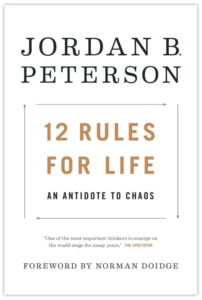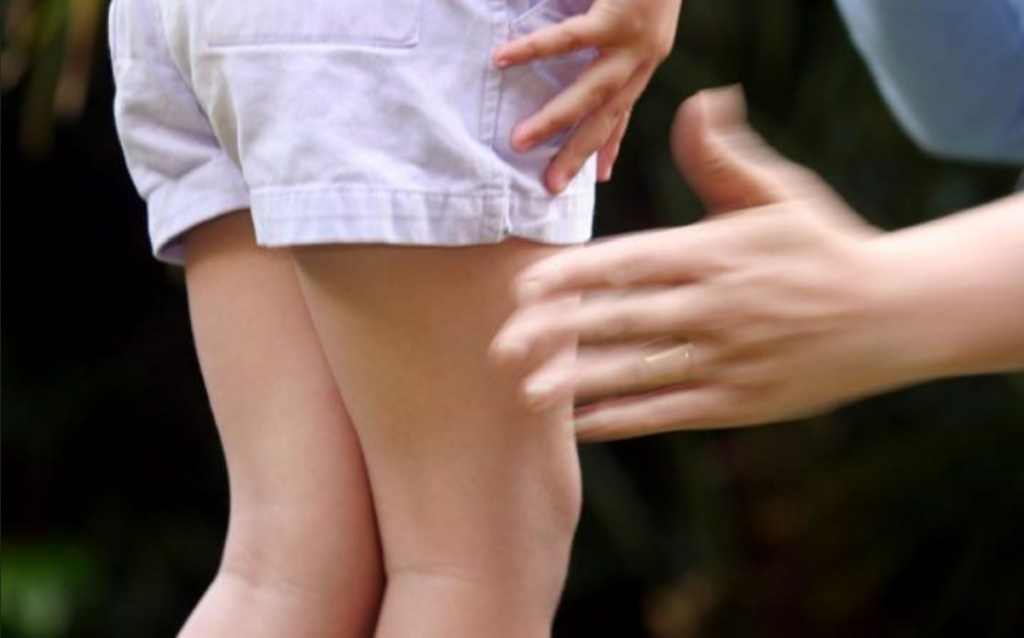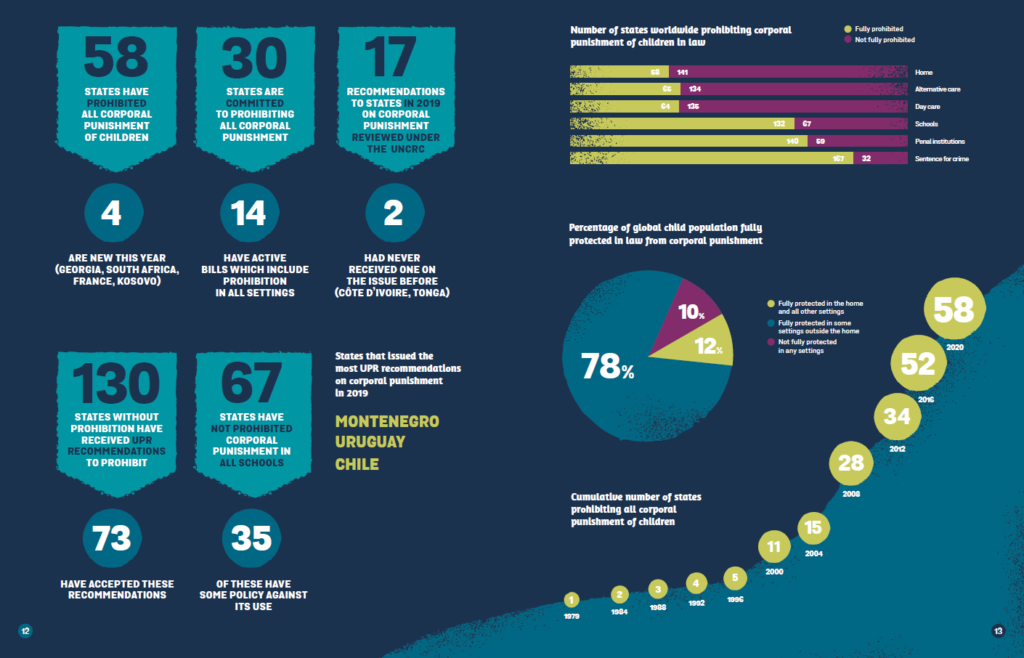Canadian psychologist and professor Jordan B. Peterson rose to fame in late 2016 for his opposition to bill C-16, a proposed bill (now passed) purportedly designed to protect ‘gender identity’ and ‘gender expression’. Since then, Peterson has gone on to amass a YouTube following of over 2.5 million subscribers, create a Patreon account earning tens of thousands of dollars per month (before deleting it last year), and publish his multi-million copy bestseller, 12 Rules for Life: An Antidote to Chaos.1 The book has remained on Amazon’s top 20 most read list for 118 weeks, ever since it was first published in January 2018.
According to its Amazon synopsis, 12 Rules for Life ‘uniquely combines the hard-won truths of ancient tradition with the stunning revelations of cutting-edge scientific research’ in order to answer the question ‘What does everyone in the modern world need to know?’ Given his impressive academic credentials and global following, Peterson certainly appears qualified to author such a book. So, let’s take a look at his revelatory research.
‘Do not let your children do anything that makes you dislike them’
 The focus of this article is Rule 5 of Peterson’s 12 Rules: Do not let your children do anything that makes you dislike them. In this chapter, Peterson (himself a father of two adult children) makes some reasonable statements about parenting such as that ‘Clear rules make for secure children and calm, rational parents.’ The controversy arises when he claims that, in order to adhere to Rule 5, parents should be willing to physically punish their children. In other words, hitting your children will help to ensure you like them (or at least remain neutral towards them?). However, Peterson takes issue with the use of the term ‘hitting’:
The focus of this article is Rule 5 of Peterson’s 12 Rules: Do not let your children do anything that makes you dislike them. In this chapter, Peterson (himself a father of two adult children) makes some reasonable statements about parenting such as that ‘Clear rules make for secure children and calm, rational parents.’ The controversy arises when he claims that, in order to adhere to Rule 5, parents should be willing to physically punish their children. In other words, hitting your children will help to ensure you like them (or at least remain neutral towards them?). However, Peterson takes issue with the use of the term ‘hitting’:
And what about the idea that hitting a child merely teaches them to hit? First: No. Wrong. Too simple. For starters, “hitting” is a very unsophisticated word to describe the disciplinary act of an effective parent.
Already, Peterson is implying that physical punishment can be part of an ‘effective’ parent’s parental toolkit. This assumption is evaluated below, but first, more from Peterson:
If “hitting” accurately described the entire range of physical force, then there would be no difference between rain droplets and atom bombs. Magnitude matters—and so does context, if we’re not being wilfully blind and naïve about the issue. Every child knows the difference between being bitten by a mean, unprovoked dog and being nipped by his own pet when he tries playfully but too carelessly to take its bone. How hard someone is hit, and why they are hit, cannot merely be ignored when speaking of hitting. Timing, part of context, is also of crucial importance. If you flick your two-year-old with your finger just after he smacks the baby on the head with a wooden block, he will get the connection, and be at least somewhat less willing to smack her again in the future. That seems like a good outcome.
Here, Peterson argues that physical punishment, in this case flicking an infant, reduces the likelihood that the infant will misbehave in the future. Contrary to claims of ‘cutting-edge research’, Peterson does so without citing a single study to support his view. In fact, this entire section of the book is bereft of any reference to any research supporting the effectiveness of corporal punishment.
For the child who is pushing the limits in a spectacularly inspired way, a swat across the backside can indicate requisite seriousness on the part of a responsible adult. There are some situations in which even that will not suffice, partly because some children are very determined, exploratory, and tough, or because the offending behaviour is truly severe.
In addition to flicking, Peterson also supports more aggressive forms of physical punishment. Despite urging parents to use ‘minimum necessary force’ he states that in some situations, even a ‘swat’ may not suffice. He enumerates several reasons for this, which revolve around attributes (e.g. ‘determined’, ‘tough’) of the child. Noticeably absent from his list of reasons why a ‘swat’ may be insufficient is the idea that physical punishment is simply not an effective form of behaviour modification.
Since Peterson does not cite any research to support the use of corporal punishment, let’s look at what the evidence actually suggests.
Research on Corporal Punishment

A 1997 study involving a national sample of 807 mothers of children 6-9 years of age concluded the following:
When parents use corporal punishment to reduce ASB [antisocial behaviour], the long-term effect tends to be the opposite. The findings suggest that if parents replace corporal punishment by nonviolent modes of discipline, it could reduce the risk of ASB among children and reduce the level of violence in American society.2
Results from another study examining the impact of corporal punishment on child behaviour problems indicated that ‘parental CP [corporal punishment] uniquely contributes to negative behavioral adjustment in children at both 36 months and at 1st grade, with the effects at the earlier age more pronounced in children with difficult temperaments.’3
The researchers also stated:
Most available research indicates that there are few, if any, positive developmental outcomes associated with CP beyond immediate compliance with a parent’s directive (Gershoff, 2002). In fact, a growing body of research suggests there may be unintended negative consequences, including increasing children’s aggressive behaviour and their likelihood of becoming delinquent and contributing to poorer psychological and cognitive functioning. (e.g. Gershoff, 2002; Smith & Brooks-Gunn, 1997).
Based on 20 years of research, authors of a 2012 literature review stated: ‘no study has found physical punishment to have a long-term positive effect, and most studies have found negative effects.’4
Recent meta-analyses conducted by Gershoff and Grogan-Kaylor found that:
Spanking was associated with more aggression, more antisocial behavior, more externalizing problems, more internalizing problems, more mental health problems, and more negative relationships with parents. Spanking was also significantly associated with lower moral internalization, lower cognitive ability, and lower self-esteem. The largest effect size was for physical abuse; the more children are spanked, the greater the risk that they will be physically abused by their parents.5
The researchers also reported that even after removing studies relying on abusive methods (hitting with fist or object), spanking was associated with detrimental child outcomes. They concluded: ‘there is no evidence that spanking does any good for children and all evidence points to the risk of it doing harm.’
Finally, in spite of Peterson’s attempt to provide a nuanced interpretation of hitting, research has demonstrated notable disparities in how parents and children experience physical punishment. For example, Dobbs and Duncan found that parents often describe corporal punishment as ‘a gentle tap or loving slap’, whilst most children in the study used the words ‘hard hit’ or ‘very hard hit’ to describe it.6
“Do as I say, not as I do”
The most absurd aspect of Peterson’s support for corporal punishment is not its complete lack of empirical backing, but rather, it’s that just a few pages earlier, he suggests a list of rules to give children—the first of which, is ‘Do not bite, kick or hit, except in self-defence.’
So if a child were to apply this rule consistently, he would have no choice but to fight back when physically ‘disciplined’ by his parents. It’s hard to believe a clinical psychologist and former Harvard professor could publish something so blatantly self-contradictory.
Widespread Condemnation
If Peterson’s lack of evidence and lack of consistency were not bad enough, he also fails to mention that 58 states have already banned corporal punishment7 and that, as noted by Elizabeth Gershoff in 2013, the United Nations condemns the use of corporal punishment:
The United Nations has said unequivocally that “corporal punishment and other cruel or degrading forms of punishment are forms of violence” (Committee on the Rights of the Child, 2006, para. 18); that corporal punishment violates Article 19 of the Convention on the Rights of the Child, which protects children from “all forms of physical or mental violence” (United Nations, 1989, Article 19, para. 1); and that it should be banned in all contexts (Committee on the Rights of the Child, 2006).8
Universal prohibition and elimination of all corporal punishment is also supported by UNICEF, UNESCO, and many other national and international organisations.9 And in Peterson’s home country of Canada, more than 400 organizations have endorsed the Joint Statement on Physical Punishment of Children and Youth, which states that:
On the basis of the clear and compelling evidence—that the physical punishment of children and youth plays no useful role in their upbringing and poses only risks to their development—parents should be strongly encouraged to develop alternative and positive approaches to discipline.10
The Moral Case
This article has focused on the question of whether corporal punishment is an effective form of behaviour modification. The evidence suggests that it isn’t. But even if it were, it would not justify the use of violence against a defenceless minor—whether construed as ‘spanking’, ‘swatting’, ‘slapping’, or any other euphemism:
Although most Americans do not like to call it so, spanking is hitting and hitting is violence. By using the euphemistic term spanking, parents feel justified in hitting their children while not acknowledging that they are, in fact, hitting. We as a society have agreed that hitting is not an effective or acceptable way for adults to resolve their differences, so it should not be a surprise that hitting children, like hitting adults, causes more problems than it solves. It is time to stop hitting our children in the name of discipline.11
There are sections of 12 Rules that hint at agreement with Gershoff. For example, when Peterson writes that parenting involves helping children learn that ‘hitting others is a sub-optimal social strategy’, and that:
Violence…is no mystery. It’s peace that’s the mystery. Violence is the default. It’s easy. It’s peace that is difficult: learned, inculcated, earned.
Yet, by the end of the chapter, he remains committed to the idea that a parent’s reliance on the ‘default’ is justified (and in certain instances, perhaps even required) when directed at a child.
But Wait… There’s More!
In early 2019, Peterson announced he was working on a sequel to 12 Rules tentatively titled Beyond Order: 12 More Rules for Life. But despite plans to release the book in January of this year, it remains unpublished. This is likely because, according to his daughter, Peterson, who had been taking prescribed antidepressants and clonazepam, ‘stopped cold turkey in the summer [of 2019] after talking with a psychiatrist…and experienced horrific physical withdrawal and anxiety.’ Consequently, he has been undergoing treatment to combat his withdrawal symptoms, which include akathisia.
The adverse reactions that can occur following the use of psychiatric drugs have been well-documented by other Mad in America contributors. Suffice it to say, assuming Peterson is able to recover and finish his planned-for sequel, perhaps by then he will have re-evaluated his stance on the issue of violence against children, reflecting the global decline in approval for corporal punishment that began decades ago.12
Regardless of Peterson’s current (and potential future) parental recommendations, here’s hoping that decline continues.
A version of this article was originally published on May 4, 2020, by Mad in America.
Footnotes
- Peterson, J. B. (2018). 12 rules for life: An antidote to chaos. Toronto: Random House Canada.
- Straus, A, M., Sugarman, D. B., & Giles-Sims, J. (1997). Spanking by parents and subsequent antisocial behavior of children. Arch Pediatr Adolesc Med, 151, 761-767, p. 761.
- Mulvaney, M. K., & Mebert, C. J. (2007). Parental corporal punishment predicts behavior problems in early childhood. Journal of Family Psychology, 21(3), 389-397, p. 389.
- Durrant, J., & Ensom, R. (2012). Physical punishment of children: lessons from 20 years of research. CMAJ, 184(12), 1373-1377, p. 1375.
- Gershoff, E. T., & Grogan-Kaylor, A. (2016). Spanking and child outcomes: old controversies and new meta-analyses. Journal of Family Psychology, 1-17, p. 12.
- Dobbs et al., 2004, p. 376, in Vittrup, B., & Holden, G. W. (2010). Children’s assessments of corporal punishment and other disciplinary practices: the role of age, race, SES, and exposure to spanking. Journal of Applied Developmental Psychology, 31, 211-220.
- Global Initiative to End All Corporal Punishment of Children. (2019). Global report 2019. Author. Retrieved May 1, 2020, from https://endcorporalpunishment.org/resources/global-report-2019
- Gershoff, E. T. (2013). Spanking and child development: We know enough now to stop hitting our children. Child Development Perspectives, 7(3), 133-137, p. 136.
- Global Initiative to End All Corporal Punishment of Children. (2017). Ending legalised violence against children: global progress to December 2017. Author. Retrieved May 1, 2020, from https://endcorporalpunishment.org/resources/global-report-2017
- Durrant, J. E., Ensom, R., & Coalition on Physical Punishment of Children and Youth. (2004). Joint statement on physical punishment of children and youth. Ottawa: Coalition on Physical Punishment of Children and Youth, p. v.
- Gershoff, 2013, p. 136.
- Pinker, S. (2011). Chapter 7 – The rights of revolutions: Children’s rights and the decline of infanticide, spanking, child abuse, and bullying. In S. Pinker, The better angels of our nature: Why violence has declined. New York: Viking.




